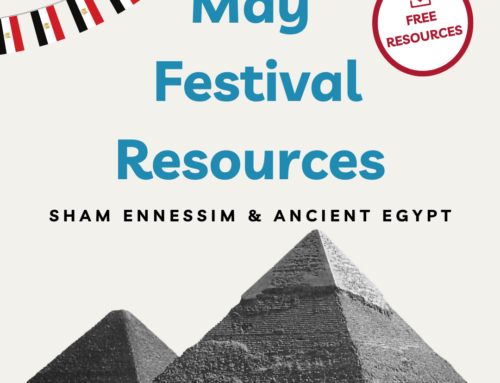
Teacher Steve and Teacher Patricia want to motivate their students by harnessing the engaging nature of games in their English classes.
Teacher Steve decides to test his students’ vocabulary acquisition by playing Hangman.
Teacher Patricia awards 10 points to students for every book they read in English, and gives them a certificate when they reach 100 points.
One teacher has used a game-based learning technique and the other has opted for a gamification strategy, but which is which?
Read on to check your answer!
Unleashing the power of play in education
Game-based learning and gamification have become very popular in recent years to make education more enjoyable and effective. Both can be used very effectively in the English classroom, however they differ in their core approaches.
So let’s talk about what game-based learning and gamification are, how they are similar and different, and ways you can use both in your English classroom! You’ll also find a free downloadable resource at the end of this post.
Game-Based Learning
Game-based learning (GBL) involves the integration of games into the learning process. It is an immersive approach where students actively participate in structured games designed to achieve educational objectives.
Many teachers already use GBL techniques in their classes. Have you ever used a jeopardy template to review for a big exam? What about playing Hangman to practise spelling? Taboo is another fun game that gets students to think through their vocabulary repertoire and explain different vocabulary words to their classmates. These are some examples of GBL techniques. GBL leverages the inherent motivational qualities of games, such as challenge, competition and rewards, to enhance engagement and foster deep learning.
The essence of GBL lies in the fact that the game itself is the vehicle for delivering educational content. Students learn by playing, experimenting and solving problems within the game’s context. This approach promotes active learning, critical thinking, collaboration and decision-making skills. Today, a large amount of online games and websites can help teachers to easily implement GBL into their classroom.

Trivial Pursuit is a classic board game that can be repurposed for your English class. Try changing the categories to the grammar, speaking or listening skills and watch as your students engage in a game-based learning experience!

Gamification
Gamification, on the other hand, involves the integration of game elements and mechanics into non-game contexts, such as… an English classroom! It takes all of the fun elements of games, like points, badges, leaderboards and levels, and applies them to educational activities. In other words, gamification takes your classroom or your unit plan and adds game elements to the mix in order to increase motivation and engagement! Along with enhancing motivation, gamification also promotes goal-oriented behaviour, and creates a sense of achievement. But that’s not all! Gamified learning environments have been shown to especially improve the listening, reading, writing and speaking skills of English learners when compared with the traditional learning experience.
Unlike GBL, gamification does not revolve around playing entire games. Instead, it focuses on incorporating game elements into existing educational processes or systems. For instance, a teacher might introduce a point system for completing assignments or quizzes, rewarding students with badges for accomplishing milestones, or implementing a leaderboard to encourage healthy competition. Gamification can be applied to various aspects of education, including classroom management, unit planning, or test preparation time.
How to use Game-Based Learning and Gamification in Your English Classroom
Game-Based Learning:
1. Create interactive quizzes or digital escape rooms that encourage problem-solving and critical thinking.
2. Introduce educational video games or game-like simulations that align with the curriculum.
3. Utilise board games or card games specifically designed for educational purposes.
4. Develop classroom competitions or challenges that require collaboration and decision-making.
Gamification:
1. Implement a point system for completing assignments or participation, allowing students to earn rewards or unlock privileges.
2. Create a leaderboard to track student progress and foster healthy competition.
3. Use badges or certificates to recognise and reward achievements or milestones.
4. Incorporate game-inspired narratives or themes into lessons or projects.
You can use game-based learning and gamification strategies together. For example, your students are preparing to take Cambridge exams. You might create a gamified test preparation unit, in which students can beat different levels of your game that relate to a specific part of the exam. These levels may take on different themes, have extra difficult “boss-mode” challenges and have point values. While your students participate in this gamified learning experience, they may also do game-based learning activities like digital escape rooms, review games or card games that pertain to the material being learned or reviewed.
I’m sure by now you’ve guessed it! Teacher Steve used game-based learning by playing hangman, and Teacher Patricia used gamification with her reading challenge! Both gamification and game-based learning are great ways to increase student motivation and give them a dynamic and engaging learning experience.
Do you have go-to game-based learning resources or gamification tips? Share it with the Milton English Teachers community and check back in for when we share our how-to guide on gamifying your classroom!
Download our Free Resource Now!
Looking for ways to incorporate more game-based learning in your classroom? Check out our QUICK GAMES page to gain easy access to ready-to-play games for your classroom! Additionally, you can download our Ultimate English Classroom Games guide, filled with games and activities that students of all ages will love!








Leave A Comment
You must be logged in to post a comment.